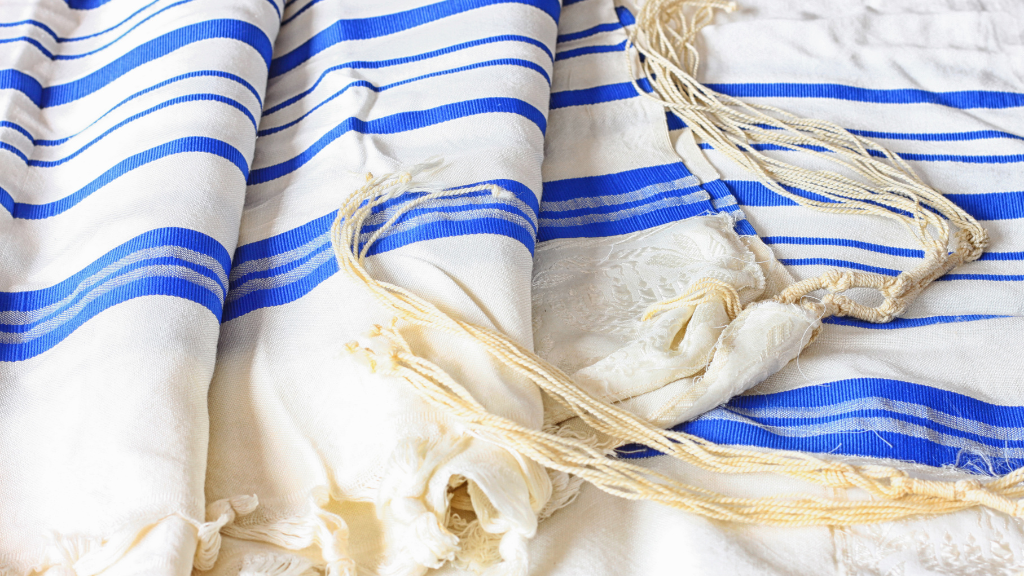Tallit – Signs of the Faith
In this series, ‘Signs of Faith’, objects that express Jewish faith are explained and discussed.
Everybody will know the tallit, the rectangular white cloth with black or blue stripes. Jews wear it as a shawl around their shoulders or on their head while praying. Therefore, it is often called a prayer shawl. What is its background?
In the Bible (Numbers 15:37-40), we find the commandment to make tzitzit, tassels, on the four corners of your garments. Those tassels remind those who wear them of God’s commandments. The tassels have to contain a cord of blue (verse 38). According to sources, the blue dye used was obtained from a sort of purple sea snail (murex), a species that is extinct according to sources. Therefore, the tzitzit nowadays is white. The passage from Numbers is recited in the morning prayers after the Shema (Deuteronomy 6:4). While reciting these words, the tassels are taken together and kissed three times.
The tzitzit is attached to the four corners of the upper garment with which you cover yourself (Deuteronomy 22:12). In antiquity, people would wear a long rectangular garment as a sort of cloak over their basic clothes. It would be a simple woollen garment for the common person or a cloak of more refined tissue for the rich and the notable. Over time, fashion changes, of course, and Jews took over their host countries’ clothing habits in the exile. The upper garment disappeared as daily fashion. But it remained in religious use as a prayer shawl.
The garment is made of wool, cotton or silk, although prominent Jewish scholars rejected silk. The black or blue stripes are a reminder of the original purple of the tzitzit. As a matter of fact, the blue stripes on the Israeli flag are a reference to the tallit.
The tallit is normally worn during the morning prayer by men and boys who are bar-mitzva. However, on Tisha be-Av (9th of Av, the fast-day commemorating the destruction of the temple), it is worn during the afternoon prayer, and on Yom Kippur (Day of Atonement) during the whole day. When wrapping yourself in the tallit, a corresponding beracha (blessing) is said. God is given thanks for commanding Israel to cover itself in the tzitzit.
Moreover, Orthodox men and boys carry a tallit katan (small tallit) under their clothes, a sort of undershirt with four corners, on which the tzitziot (plural form) is attached. Usually, they have the tzitziot over their clothes so that they are clearly visible. In that way, they always carry the reminder of God’s good commandments with them.






